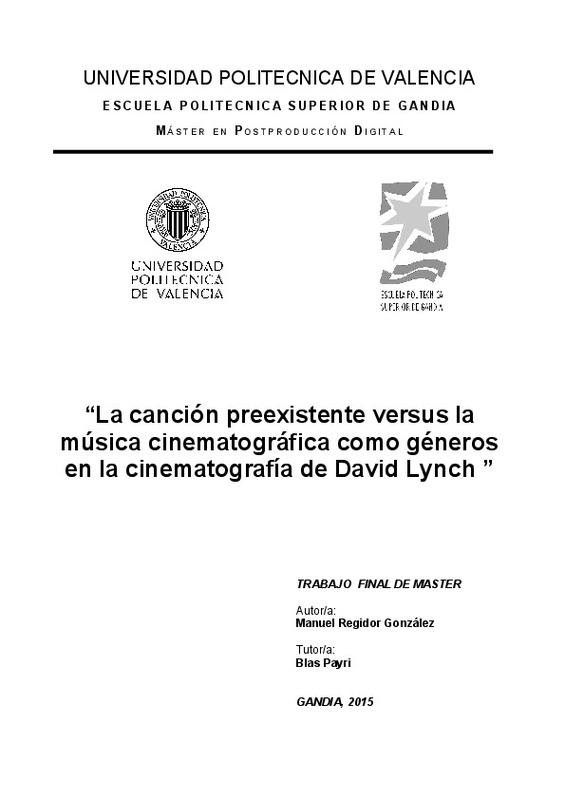JavaScript is disabled for your browser. Some features of this site may not work without it.
Buscar en RiuNet
Listar
Mi cuenta
Estadísticas
Ayuda RiuNet
Admin. UPV
La canción preexistente versus la música cinematográfica como géneros en la cinematografía de David Lynch
Mostrar el registro completo del ítem
Regidor González, M. (2015). La canción preexistente versus la música cinematográfica como géneros en la cinematografía de David Lynch. Universitat Politècnica de València. http://hdl.handle.net/10251/57378
Por favor, use este identificador para citar o enlazar este ítem: http://hdl.handle.net/10251/57378
Ficheros en el ítem
Metadatos del ítem
| Título: | La canción preexistente versus la música cinematográfica como géneros en la cinematografía de David Lynch | |||
| Autor: | Regidor González, Manuel | |||
| Director(es): | ||||
| Entidad UPV: |
|
|||
| Fecha acto/lectura: |
|
|||
| Resumen: |
En este estudio se analiza el uso de la canción pop en cuatro películas dirigidas por el
estadounidense David Lynch: Blue Velvet (1986), Wild at Heart (1990), Lost Highway
(1997) y Mulholland Drive (2001). Aparecen ...[+]
This study analyses the use of pop songs in four films directed by the American filmmaker
David Lynch: Blue Velvet (1986), Wild at Heart (1990), Lost Highway (1997), and
Mulholland Drive (2001). The different roles that ...[+]
|
|||
| Palabras clave: |
|
|||
| Derechos de uso: | Reconocimiento (by) | |||
| Editorial: |
|
|||
| Titulación: |
|
|||
| Tipo: |
|
recommendations
Este ítem aparece en la(s) siguiente(s) colección(ones)
-
EPSG - Trabajos académicos [5004]
Escuela Politécnica Superior de Gandia







